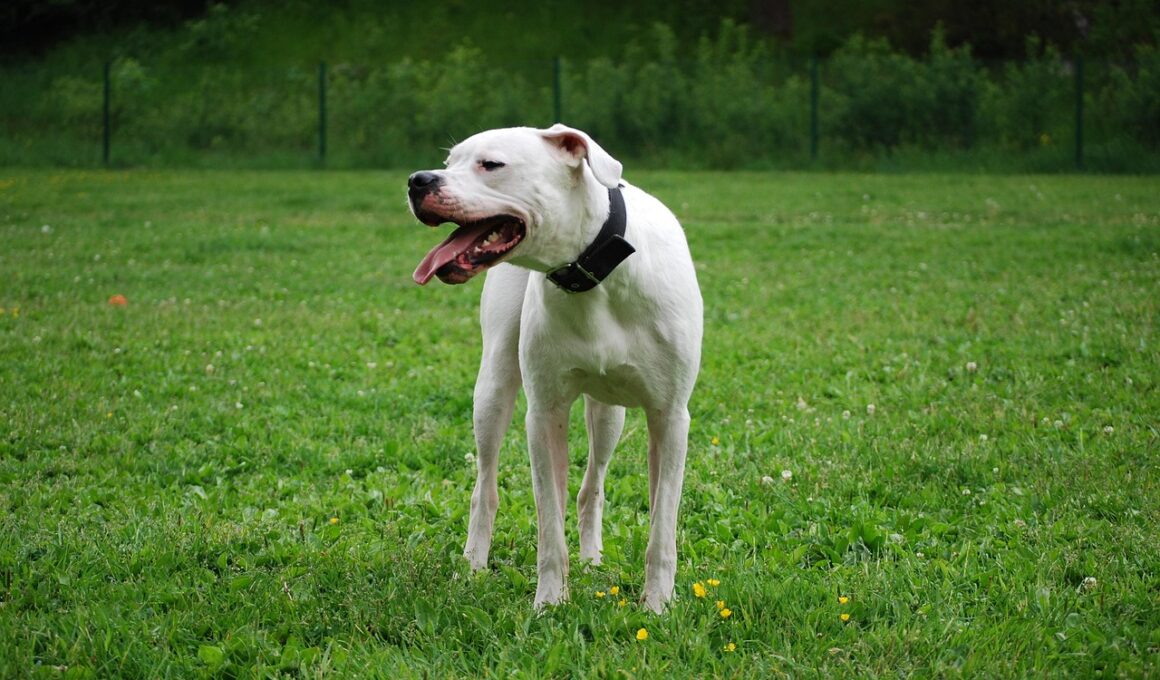The Role of Exercise in Reducing Separation Anxiety for Dogs
Separation anxiety is a common challenge faced by many dog owners, stemming from a variety of causes. Understanding canine behavior is critical in addressing this issue. Dogs are social animals who thrive on companionship. When left alone for extended periods, they may experience stress, leading to destructive behaviors, excessive barking, or self-harm. These responses can stem from their natural instincts, especially if they have been adopted from shelters or previously experienced abandonment. To combat separation anxiety effectively, engaging your dog in regular exercise is vital. Exercise not only stimulates your dog physically but also provides much-needed mental stimulation, helping to alleviate anxiety. Walking, running, or playing fetch are great ways to tire out your pet. Furthermore, incorporating social interactions during these activities can enhance your dog’s confidence and reduce anxiety levels. Consistency is key in establishing a routine that includes daily walks and playtime to foster a calm demeanor. Offering your dog sufficient exercise can empower them to handle situations that may arise when they are left alone.
Benefits of Physical Activity
Physical activity offers numerous benefits that play a crucial role in reducing separation anxiety in dogs. Regular exercise helps dissipate pent-up energy, which is often a key factor contributing to anxiety. When dogs are adequately exercised, they’re less likely to engage in destructive behaviors caused by boredom or pent-up stress. Moreover, vigorous activities can stimulate the production of endorphins, the body’s natural stress-relievers, helping the dog feel happier and more at ease. Activities such as agility training, fetch, or long walks can provide great physical outlets. Engaging dogs in group activities or dog parks also fosters socialization, helping them develop a sense of community and belonging. As they interact with other dogs, they learn essential social skills that can further reduce anxiety when left alone. Additionally, the emotional bond a pet shares with its owner strengthens through exercise, creating a sense of safety and security. Dogs that have established a trusting relationship with their owners are less likely to experience anxiety when alone. Investing in regular exercise can yield significant long-term benefits for both the dog and the owner.
Creating an Exercise Plan
Establishing a structured exercise plan is essential for combating separation anxiety. Start by assessing your dog’s breed, age, and energy level, as these factors will help determine an appropriate routine. High-energy breeds may require more vigorous activities, while older dogs might benefit from gentler pursuits. Aim for at least one hour of exercise each day, divided into manageable sessions. This can include a combination of walks, play sessions, and mental stimulation. Incorporating toys such as puzzle feeders can further engage your dog, appealing to their natural instincts. During walks, allow time for sniffing and exploring, as this will not only tire them but also provide essential mental stimulation. Also, consider varying the locations of your walks to keep things interesting. Rotate between different parks or trails to expose your dog to new scents and environments. Furthermore, enlist the help of a professional trainer or canine behaviorist if separation anxiety persists. An expert can offer tailored advice and strategies to complement your exercise plan, ensuring that you’re on the right track to helping your dog adjust to being alone.
In addition to physical exercise, incorporating training sessions can also play a significant role in reducing anxiety. Teaching your dog basic commands or tricks creates mental engagement, which is just as important as physical activity. Training not only provides mental stimulation but also strengthens the bond between owner and dog. Positive reinforcement techniques, such as offering treats when your dog responds correctly, can encourage continued learning and create a more secure environment. Gradually increasing the duration of alone time during training sessions can help your dog adapt to being by themselves. Always start with short periods and extend them gradually, giving your dog the chance to become comfortable with the solitude. During this process, it’s essential to stay calm and composed, as dogs can easily pick up on their owner’s emotions. Furthermore, creating a safe space with comforting items, such as their favorite blanket or toys, can make a significant difference in how your dog feels when left alone. The right combination of training and exercise can lead to a more relaxed and confident pet.
Socialization Opportunities
Socialization plays a crucial role in reducing separation anxiety, and exercise can be a gateway to various social opportunities for your dog. Engaging your dog in group classes or playgroups can immensely boost their confidence. Interacting with other dogs allows them to learn proper social cues while reinforcing positive experiences in a controlled environment. Training classes designed for dogs provide structure and fun, allowing them to meet other pets and people. Additionally, taking your dog to dog parks exposes them to different situations, noises, and environments, which can diminish their anxiety over time. Regularly visiting these social environments will encourage your dog to become more adaptable and comfortable in various settings. Make sure to monitor interactions carefully and intervene if necessary to prevent overwhelming experiences. If your dog displays signs of anxiety, consider seeking assistance from a professional dog trainer. They can help enhance your dog’s social skills while providing strategies to manage anxiety effectively. By prioritizing socialization and exercise, you’re giving your dog the tools they need to thrive both physically and emotionally.
Another effective method to alleviate separation anxiety is utilizing interactive toys that encourage independent play. These toys can provide mental engagement while you are away, distracting your dog and reducing feelings of loneliness. Puzzle toys that dispense treats when completed challenge dogs and stimulate their minds, keeping them entertained for longer periods. Rotate these toys regularly to maintain your dog’s interest and engagement, preventing boredom. Additionally, consider leaving items that carry your scent, such as an old T-shirt or blanket, to comfort your dog in your absence. Familiar scents can create a sense of security, helping them feel more at home. Furthermore, establishing a consistent daily routine can provide comfort and predictability for your dog. Knowing what to expect can ease anxious feelings, contributing to a calmer demeanor when left alone. When you return home, greet your dog calmly, without excessive excitement, to avoid reinforcing anxious behaviors. Establishing a positive goodbye and hello routine can mitigate anxiety-related reactions. With patience and consistency in applying these techniques, you will assist your dog in managing separation anxiety healthily.
Conclusion: Long-Term Strategies
Managing separation anxiety in dogs demands ongoing effort and patience. Consistent exercise routines, socialization opportunities, effective training, and mental engagement play vital roles in helping dogs adjust to time alone. The journey involves understanding your dog’s unique needs and taking proactive steps to create a supportive environment. A combination of physical and mental stimulation will be crucial in preparing your dog for long stretches of solitude. As you implement these strategies, make adjustments based on your dog’s responses and preferences; each dog is different, and what works for one may not work for another. Monitoring their progress and seeking professional help when needed ensures they can develop resilience in the face of anxiety. Remember, building confidence and diminishing anxiety takes time. By prioritizing exercise and social interactions, you’re setting your dog up for a happier, more secure life. As you commit to this journey, celebrate small victories along the way. Ultimately, a harmonious home environment benefits both you and your pet, fostering a deep bond of trust and love that supports a calmer and more resilient dog.
In conclusion, helping your dog through separation anxiety requires a multi-faceted approach, with exercise being a critical component. Regular physical activity, coupled with mental stimulation and socialization, not only combats anxiety but also fosters a stronger owner-dog relationship. By actively engaging in your dog’s exercise needs, you contribute to their overall well-being. Implementing an individualized approach ensures that your dog feels secure and loved, creating a peaceful environment. Moreover, the positive effects of regular exercise extend beyond simply reducing anxiety; they contribute to a healthier and happier dog overall. Investing time in these activities not only benefits your dog but also strengthens your bond together. Remember to be patient and consistent as you navigate this journey together. Celebrate progress and utilize support from professionals if needed. Over time, you’ll likely see a shift in your dog’s behavior and demeanor as they learn to cope with being left alone. Through dedication and understanding, pet owners can create a fulfilling life for their dogs, allowing them to feel safe, secure, and less anxious when faced with separation.


